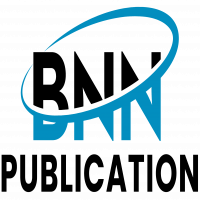Writing a Book? Don’t Skip These 3 Editing Phases

Strong 8k brings an ultra-HD IPTV experience to your living room and your pocket.
So, you’ve finished writing your book. You’ve typed those final words, maybe even let out a little victorious sigh (or cry), and now you’re staring at your manuscript thinking, “What next?”
Here’s the not-so-secret truth: writing the book is only half the battle. The real magic happens in the editing process. But hold up—editing isn’t just a quick once-over with spellcheck or asking your English-major cousin for a glance. It’s a multi-layered journey with distinct phases, each with its own purpose and power.
Let’s break down the three essential editing phases every author must go through before hitting that publish button—whether you're self-publishing or going the traditional route. And trust us, skipping these? That’s like baking a cake and forgetting the oven.
Phase 1: Developmental Editing – The Big Picture Pass
Developmental editing (also called content or structural editing) is the stage where you zoom all the way out. We're not worried about commas or typo policing here. This is where your manuscript gets evaluated for structure, pacing, coherence, and overall storytelling muscle.
Ask yourself:
• Is the plot tight, or are there saggy middle chapters that go nowhere?
• Are the characters fully developed with real motivations?
• Does the story arc actually arc—or is it just a bumpy slope of confusion?
A developmental editor will call out inconsistencies, plot holes, character flat-lining, and even suggest major rewrites if necessary. It's like having a storytelling coach walk through your book and point out where the engine’s stalling or the wheels are about to fall off.
And yes—it can be a bit painful to hear what’s not working. But trust the process. Even bestselling authors go through brutal developmental edits. It’s all part of shaping your book into something readers can’t put down.
Pro Tip: Don’t do this alone. At this phase, you’re too close to your story. You need fresh eyes and objective feedback.
Phase 2: Line Editing – The Voice and Flow Polish
Once the foundation of your book is structurally sound, it’s time for the next level: line editing. This is where we step into the sentence-by-sentence world to fine-tune the rhythm, tone, and language of your writing.
Think of this as your manuscript’s “style check.” A line editor won’t just fix a clunky sentence—they’ll help elevate your voice and make sure your writing sings on the page. They’ll help you:
• Trim wordy sentences
• Replace passive voice with active energy
• Smooth out transitions
• Sharpen your dialogue
• Cut redundancies
Imagine your manuscript as a sculpture. Developmental editing is the chisel that gives it form. Line editing is the sandpaper that smooths out the surface and adds that artistic shine.
This phase is especially important if you tend to overwrite, repeat yourself, or struggle to maintain a consistent tone. A good line editor keeps your voice intact while making your prose tighter, cleaner, and more engaging.
Warning: This is NOT copyediting. Line editing digs deeper than just grammar—it’s about style and flow. And yes, it might mean slicing your favorite metaphors. (Don’t worry, you can keep some of them.)
Phase 3: Copyediting – The Detail Scrub
Now that your manuscript’s structure is strong and the writing flows like a dream, it’s time for the detail clean-up. Copyediting is where grammar, punctuation, spelling, and consistency reign supreme.
This phase may not feel as sexy as shaping plot arcs or elevating prose—but it’s absolutely vital. Errors distract readers. Misused commas, inconsistent capitalization, or confusing word choices can pull people out of your story in an instant. And once their attention is lost, it’s hard to win it back.
A copyeditor will:
• Correct spelling, grammar, and punctuation
• Ensure consistent style (e.g., are you using “okay” or “OK” throughout?)
• Fix misused words (you’d be surprised how often “complement” and “compliment” get confused)
• Flag awkward or confusing sentence constructions
• Double-check facts and timelines if needed
This is the phase where you comb through every last word to make sure it earns its place on the page. It’s about respecting your reader—and your craft.
Reality Check: No, autocorrect and Grammarly aren’t enough. You need a human who understands nuance, context, and style. Software can't catch everything—especially when it comes to storytelling.
Bonus Round: Proofreading (The Final Polish)
Okay, so we said three phases—but think of proofreading as the final pre-flight checklist. It comes after copyediting and should be the very last stop before publishing. Proofreaders check for any sneaky typos or formatting issues that may have slipped through the cracks.
You’d be amazed how easily a typo can hide in plain sight—until it's on the first printed page.
Why These Phases Matter More Than You Think
Here’s the truth: Readers might forgive a slow chapter. They might overlook a clunky sentence or two. But if your book is riddled with inconsistencies, confusing plot points, and constant typos? That’s a one-way ticket to bad reviews and low ratings.
Every edit is a form of respect—to your story, your craft, and your audience. And if you’re hoping to land agents, publishing deals, or even loyal fans, polished writing makes a massive difference.
Don’t think of editing as a chore. Think of it as the transformation process that turns your raw story into a published masterpiece.
You Don’t Have to Navigate This Alone
Editing can feel overwhelming—especially when you’re so close to your own work. That’s where having professionals in your corner makes all the difference.
The team behind BNN Publication knows exactly what it takes to get a manuscript from “I think I’m done?” to “I can’t believe this is really my book!” With years of hands-on experience in editing, publishing, and guiding authors at every stage, they understand that every writer—and every book—is different.
Whether you’re a first-time novelist or a seasoned author polishing your latest work, working with people who live and breathe publishing can save you time, stress, and unnecessary rewrites. It’s not just about getting your book out there—it’s about getting it right.
Your story deserves the best version of itself. So when you're done writing, don’t rush to publish. Take a breath, dig into the editing journey, and give your manuscript the attention it truly needs.
After all, every great book you’ve ever loved? It didn’t just happen. It was edited, shaped, and refined—with care.
Let your story be one of those.
Note: IndiBlogHub features both user-submitted and editorial content. We do not verify third-party contributions. Read our Disclaimer and Privacy Policyfor details.


